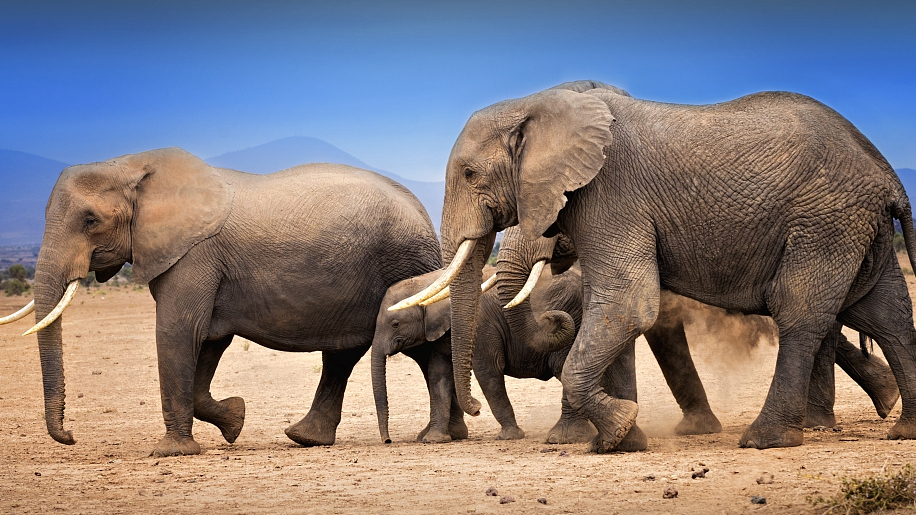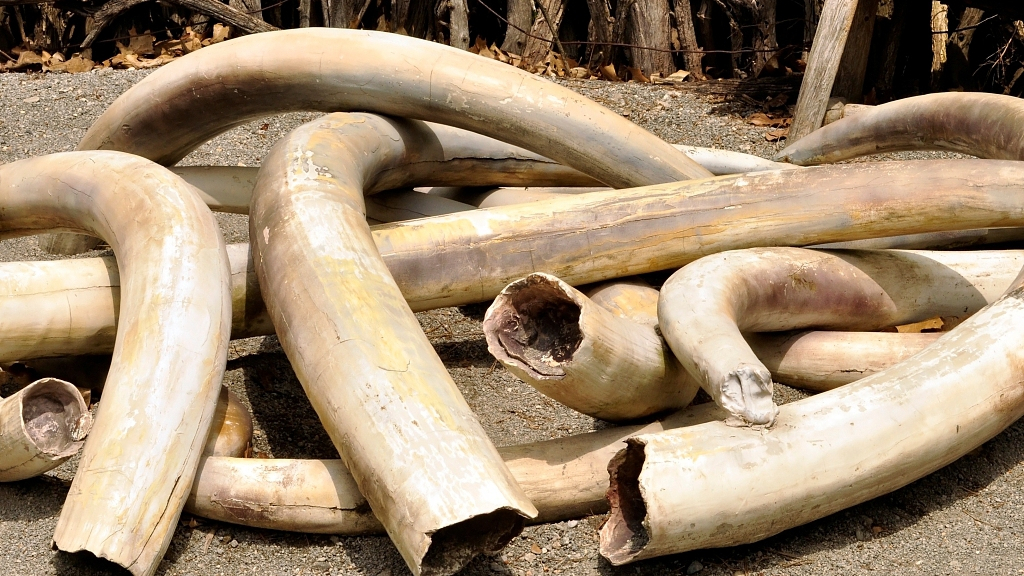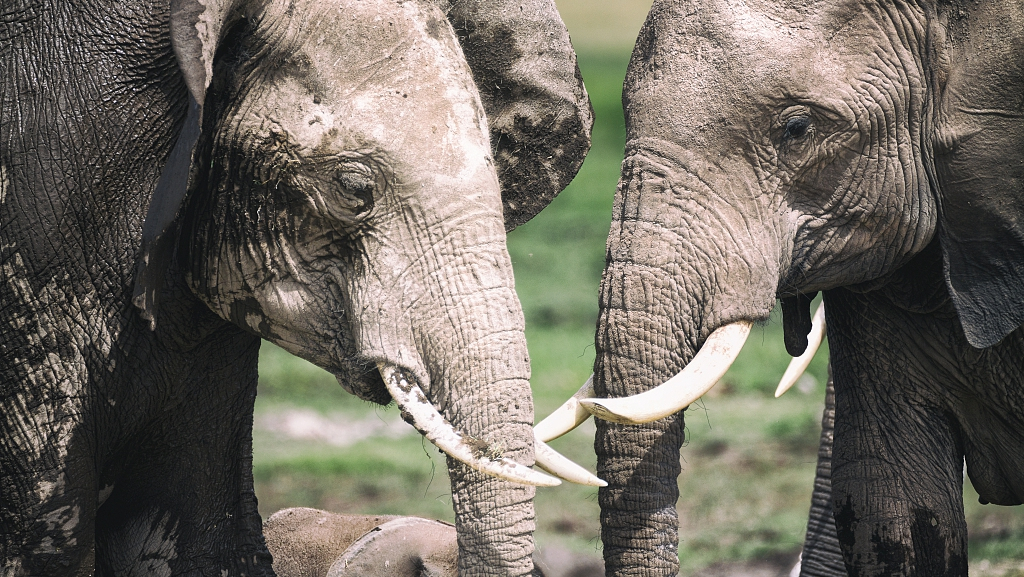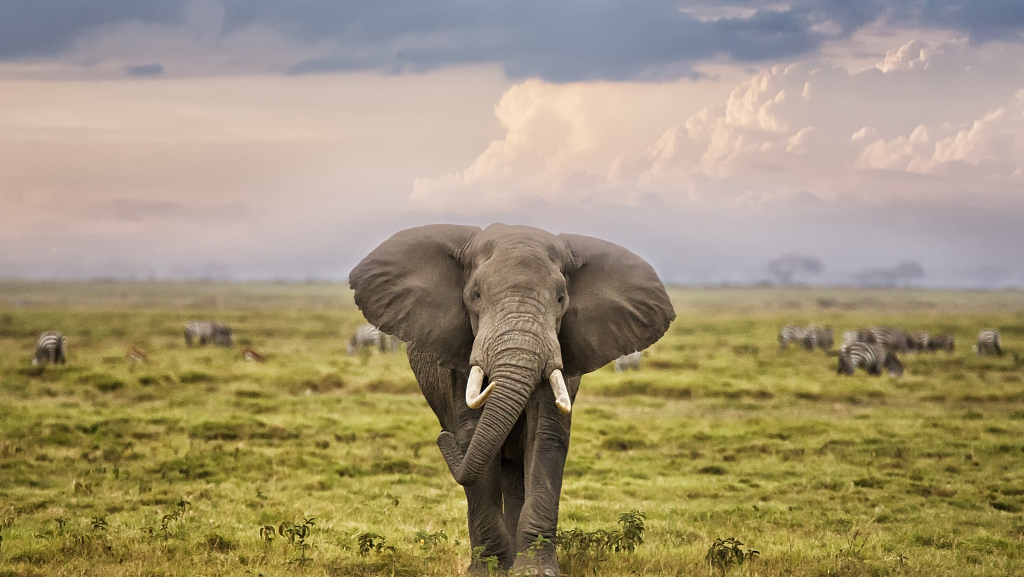
A study by the UK's University of Bristol found that the global price of ivory has increased tenfold since 1989, fueling more poaching activities and thus becoming a major threat to elephant populations around the globe.
On Monday, Bristol University published an article "Increasing value of ivory poses major threat to elephant populations", in which it released a report on global ivory prices.
In this report, researchers from the university used a large dataset of ivory prices collected between 1989 and 2017 and visits to ivory markets across Africa, Europe and Asia, to assess the change of ivory prices and related impact.

Elephants. /VCG Photo
They found that the global price of ivory grew ten times since its 1989 trade ban by the Convention on the International Trade in Endangered Species (CITES). Ironically, ivory has become an increasingly valuable commodity since the ban, with Asian markets having the highest prices and Africa the lowest.
And despite the CITES ban on ivory, poaching associated with its illegal trade has not prevented the suffering of elephants and is estimated to cause an eight percent loss in the world's elephant population every year, according to the study.
Monique Sosnowski, lead author who carried out the research at the Bristol Veterinary School, said that currently poachers are killing an estimated 100 elephants of the remaining 350,000 each day.

Ivories. /VCG Photo
The researchers hope that by revealing these trends and the variables relevant to price determination, better decisions can be made with regards to global ivory policies.
The research team's next steps include incorporating their conclusions into bio-economic models, which may add evidence to support decisions concerning the CITES ivory ban, national trade regulations, as well as to global ivory stockpile management.

Elephants. /VCG Photo
The tusks that elephants use for defense, offense, digging, lifting objects and gathering food, have become both a blessing and a curse.
In order to remove an entire tusk, poachers often carve into an elephant's skull as one third of the tusk is imbedded within the skull, in a part that contains many nerves, tissue and blood vessels.
The process is both brutal and fatal.
Once removed, the tusks will not grow back.

Elephant. /VCG Photo
(Cover image via VCG)
(If you want to contribute and have specific expertise, please contact us at nature@cgtn.com)

Copyright © 2018 CGTN. Beijing ICP prepared NO.16065310-3
Copyright © 2018 CGTN. Beijing ICP prepared NO.16065310-3